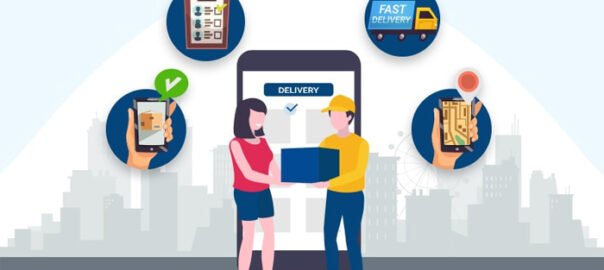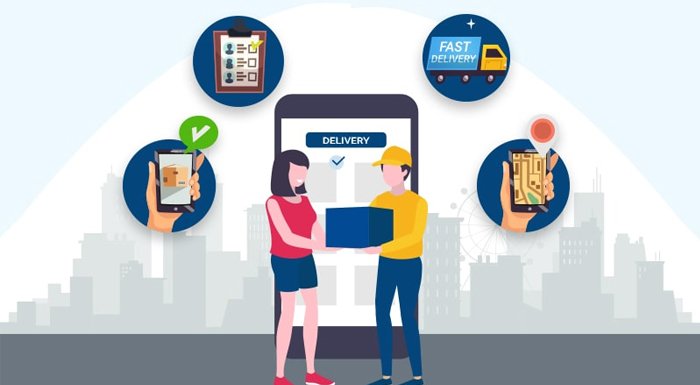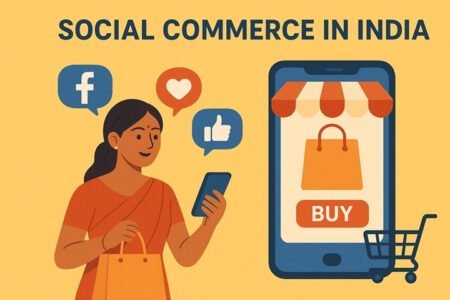
Last Mile-Delivery: The final frontier in logistics
In the e-commerce sector, last mile delivery is an important part of the supply chain. It is the final stage of the delivery process, where goods are moved from the distribution center to the customer’s doorstep.
As more people opt to shop online, they expect fast deliveries, making it important for retailers to ensure a smooth and satisfactory last mile delivery. A well-executed last mile delivery helps engage and retain customers, whereas poor execution can negatively impact customer satisfaction and turn into a costly and complex process.
The duration for last-mile delivery process, varies significantly from a few hours for local deliveries to one to two days for others, depending on distance and logistics capabilities. To meet these demands, businesses increasingly rely on leading global last-mile delivery service providers such as DHL, FedEx, United Parcel Service, and Amazon, all of whom continue to shape the last-mile delivery landscape.
The market for last-mile delivery is expanding rapidly. According to Statista, by 2027, the global last-mile delivery market is expected to grow to more than 200billion U.S dollars, up from 108.1 billion U.S dollars in 2020. The growth of the last-mile delivery market is fueled by the increasing number of online orders.
A report from Capgemini Research Institute revealed that last-mile delivery has become a key consumer expectation in the food and grocery sector. The report also suggested that 40% of consumers rank delivery services as a ‘must-have’ feature for food and grocery purchases, and one in five consumers [20%] said they were prepared to switch retailers if delivery services were not provided.
Importance of Last-Mile delivery
- Customer satisfaction and Loyalty- A well-executed last-mile delivery enhances customer satisfaction, drives repeat business, and encourages positive reviews. In contrast, a poor delivery experience can lead to customer dissatisfaction and negative word-of-mouth, ultimately impacting brand reputation.
- Cost-Efficiency– Optimizing last-mile delivery allows businesses to reduce operational costs by streamlining routes, minimizing delays, and leveraging technology to improve efficiency.
- Operational Efficiency- last-mile delivery can enhance operational efficiency by reducing the time and resources required for deliveries, resulting in a more streamlined and cost-effective process.
- Brand reputation- Reliable and consistently excellent delivery services strengthens brand reputation, helping to attract new customers and boost customer loyalty.
- Enhanced Visibility- last- mile delivery solutions generate valuable business insights by tracking delivery performance, understanding customer preferences, and identifying operational bottlenecks, empowering companies to drive continuous improvement and enhance overall efficiency.
- Meeting customer expectations- In the digital age, customers increasingly expect fast and flexible delivery choices, making last-mile delivery a critical competitive advantage for businesses.
- Competitive advantage- Businesses that excel in last-mile delivery can gain a major competitive advantage by delivering outstanding service and cultivating strong customer loyalty.
However, last-mile delivery presents a range of challenges that businesses must navigate. These include the growing demand for same-day delivery, the complexity of planning and executing efficient delivery routes, and the fact that each package often needs to be delivered to a different location. Unpredictable traffic conditions and inaccurate delivery addresses further complicate the process. Additionally, many businesses lack a centralized platform to ensure transparency and real-time visibility throughout the delivery journey. The high cost associated with last-mile logistics, rising demand for specialized shipping services, and increasing concerns over carbon emissions and environmental impact add to the pressure, making last-mile delivery both a critical and complex aspect of modern supply chains.
Beyond the operational difficulties, the financial burden of last-mile delivery is substantial and often underestimated. Factors like, labor costs, fuel costs, delivery equipment costs, reverse logistics cost, last mile delivery software costs and miscellaneous costs.
According to LOGINEXT, last-mile delivery costs typically account for approximately 41% to 53% of the total supply chain costs.
Last-mile delivery is closely tied to the gig economy, where many workers operate as independent contractors or through digital platforms. These workers provide the flexibility and scalability needed to meet shifting delivery demands, making gig-based models a cost-effective solution for last-mile delivery services.”
In conclusion, last-mile delivery is a vital component of the e-commerce supply chain, directly influencing customer satisfaction, brand reputation, and operational efficiency. While it offers significant competitive advantages, it also presents logistical and financial challenges. Embracing innovation, technology, and flexible workforce models is key to overcoming these hurdles and meeting evolving consumer expectations.








